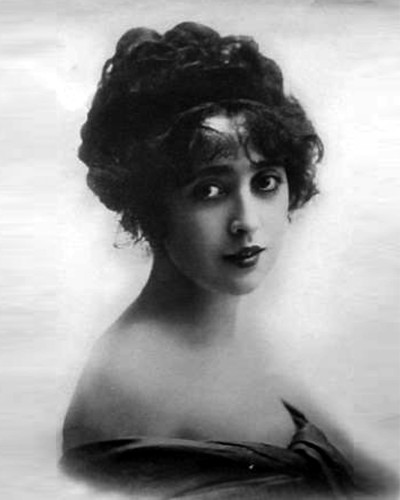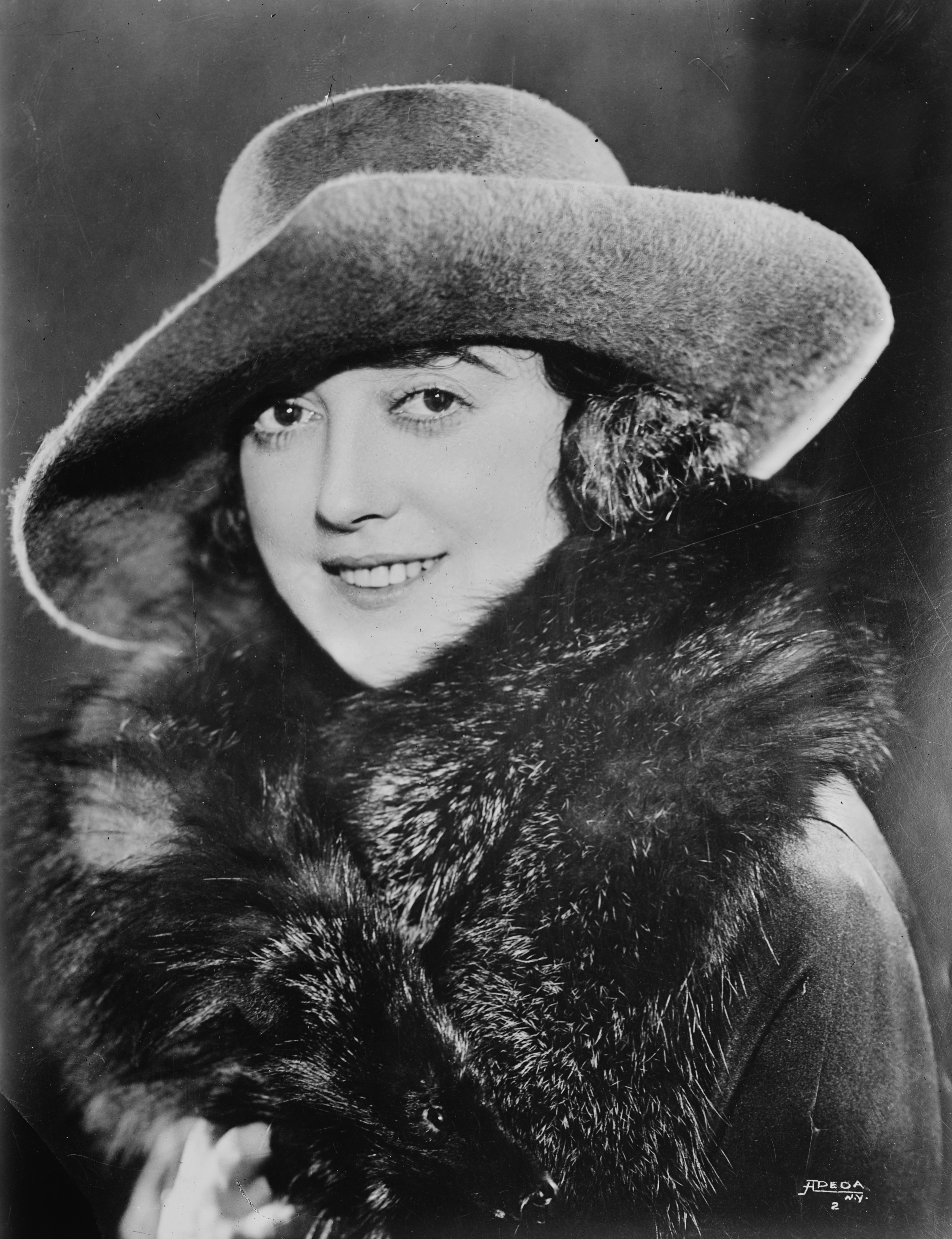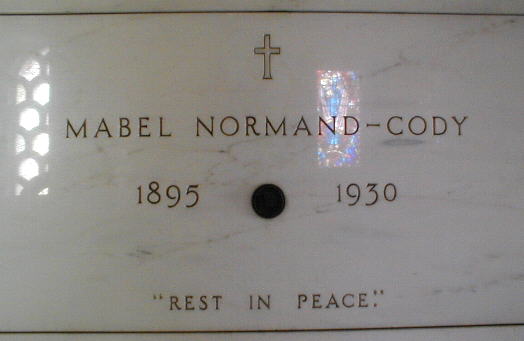Mabel Normand (Mabel Ethelreid Normand)

Born Mabel Ethelreid Normand in New Brighton, Staten Island, New York, she grew up in a working-class family. Normand’s mother was of Irish heritage, while her father was French Canadian. Her father, Claude Normand, was employed as a cabinet maker and stage carpenter at Sailors’ Snug Harbor home for elderly seamen. Before she entered films at age 16 in 1909, Normand worked as an artist’s model, which included posing for postcards illustrated by Charles Dana Gibson, creator of the Gibson Girl image, as well as for Butterick’s clothing pattern manufacturers in lower Manhattan. For a short time, she worked for Vitagraph Studios in New York City for twenty-five dollars a week, but Vitagraph founder Albert E. Smith admitted she was one of several actresses about whom he made a mistake in estimating their “potential for future stardom.” Her quietly effervescent lead performance while directed by D. W. Griffith in the dramatic 1911 short film Her Awakening drew attention and she met director Mack Sennett while at Griffith’s Biograph Company, embarking upon a topsy-turvy relationship with him; he later brought her across to California when he founded Keystone Studios in 1912. Her earlier Keystone films portrayed her as a bathing beauty but Normand quickly demonstrated a flair for comedy and became a major star of Sennett’s short films. Normand appeared with Charles Chaplin and Roscoe “Fatty” Arbuckle in many short films as well as men who would later become icons such as Oliver Hardy, Stan Laurel, and Boris Karloff.
She played a key role in starting Chaplin’s film career and acted as his leading lady and mentor in a string of films in 1914, sometimes co-writing and directing or co-directing films with him. Chaplin had considerable initial difficulty adjusting to the demands of film acting and his performance suffered for it. After his first film appearance in Making a Living, Sennett felt he had made a costly mistake. Most historians agree it was Normand who persuaded him to give Chaplin another chance and she and Chaplin appeared together in a dozen subsequent films, almost always as a couple in the lead roles. In 1914 she starred with Marie Dressler and Chaplin in Tillie’s Punctured Romance, the first feature-length comedy. Earlier that same year, in January/February, Chaplin first played his Tramp character in Mabel’s Strange Predicament, although it wound up being the second Tramp film released; Chaplin offers an account of his experience on the film in his autobiography. In 1918, as her relationship with Sennett came to an end, Normand signed a $3,500 a week contract with Samuel Goldwyn and opened a film studio in Culver City.
Director William Desmond Taylor shared her interest in books and the two formed a close relationship. According to author Robert Giroux, Taylor was deeply in love with Normand, who had originally approached him for help in curing her cocaine dependency. Based upon Normand’s subsequent statements to investigators, her repeated relapses were devastating for Taylor. According to Giroux, Taylor met with federal prosecutors shortly before his death and offered to assist them in filing charges against Normand’s cocaine suppliers. Giroux expresses a belief that Normand’s suppliers learned of this meeting and hired a contract killer to assassinate the director. According to Giroux, Normand suspected the reasons for Taylor’s murder, but did not know the identity of the triggerman. On the night of his murder, February 1, 1922, Normand left Taylor’s bungalow at 7:45 p.m. in a happy mood, carrying a book he had given her as a loan. They blew kisses to each other as her limousine drove away. Normand was the last person known to have seen Taylor alive. The Los Angeles Police Department subjected Normand to a grueling interrogation, but ruled her out as a suspect. Most subsequent writers have done the same. However, Normand’s career had already slowed and her reputation was tarnished. According to George Hopkins, who sat next to her at Taylor’s funeral, Normand wept inconsolably throughout the ceremony.
In 1924, Normand’s chauffeur Joe Kelly shot and wounded millionaire oil broker and amateur golfer Courtland S. Dines with her pistol. At the time of the shooting, Dines was romantically involved with Normand’s friend (and frequent Chaplin co-star) Edna Purviance. Purviance was also the next door neighbor of William Desmond Taylor.
Normand continued making films and was signed by Hal Roach Studios in 1926 after discussions with director/producer F. Richard Jones, who had directed her at Keystone. At Roach she made the films Raggedy Rose, The Nickel-Hopper, and One Hour Married (her last film), all co-written by Stan Laurel, and was directed by Leo McCarey in Should Men Walk Home?. The films were released with extensive publicity support from the Hollywood community, including her friend Mary Pickford. In 1926, she married actor Lew Cody, with whom she had appeared in Mickey in 1918. They lived separately in nearby houses in Beverly Hills. However, Normand’s health was in decline due to tuberculosis. After an extended stay in Pottenger’s Sanitorium, she died on February 23, 1930 from tuberculosis in Monrovia, California, at the age of 37. She was interred as Mabel Normand-Cody at Calvary Cemetery, Los Angeles.
Born
- November, 09, 1892
- USA
- New Brighton, New York
Died
- February, 23, 1930
- USA
- Monrovia, California
Cause of Death
- tuberculosis
Cemetery
- Calvary Cemetery
- Los Angeles, California
- USA



